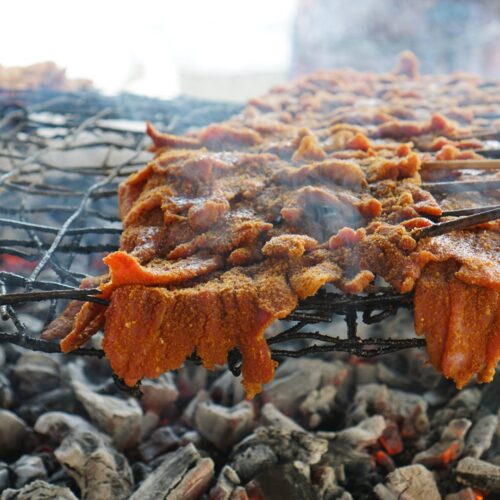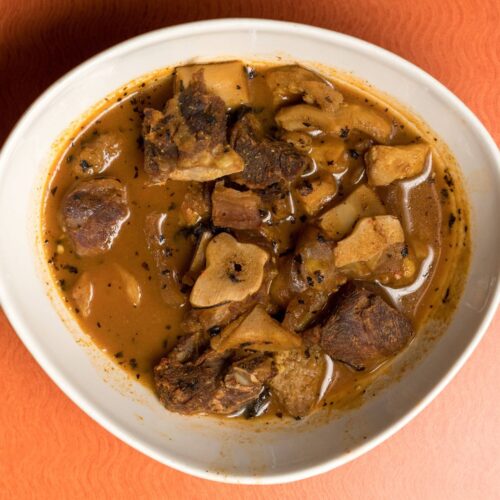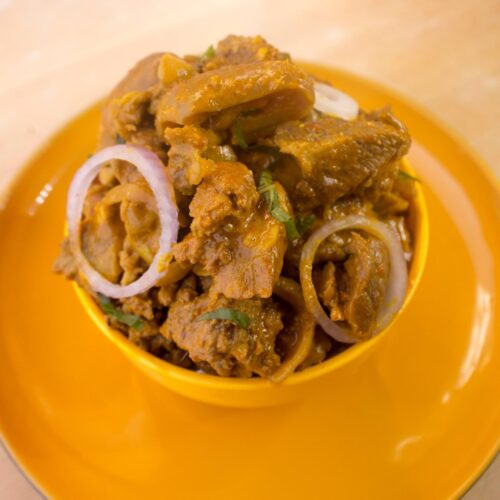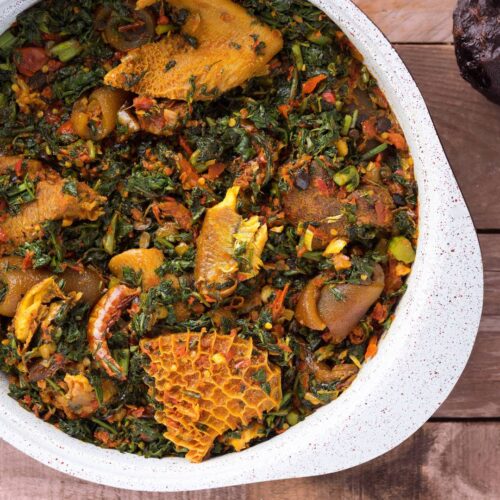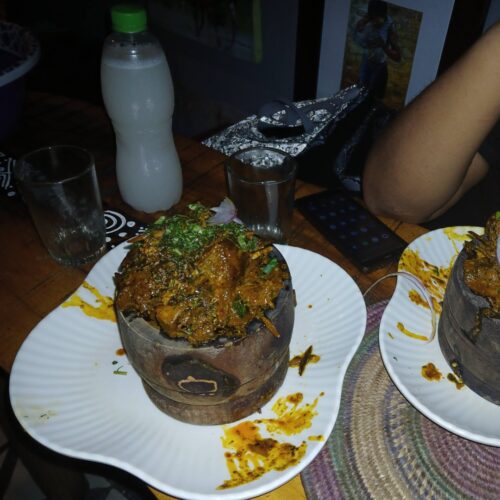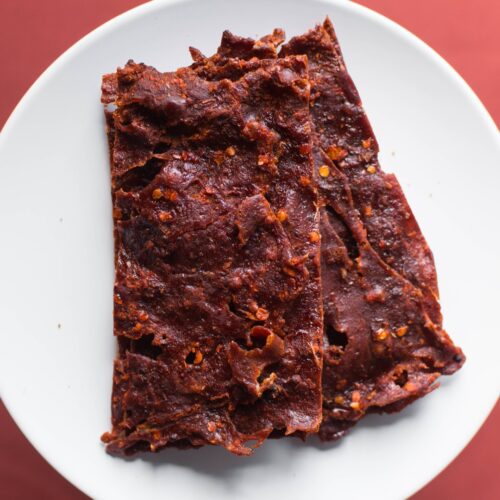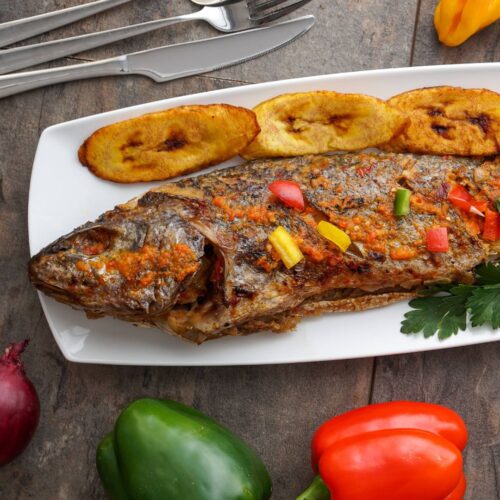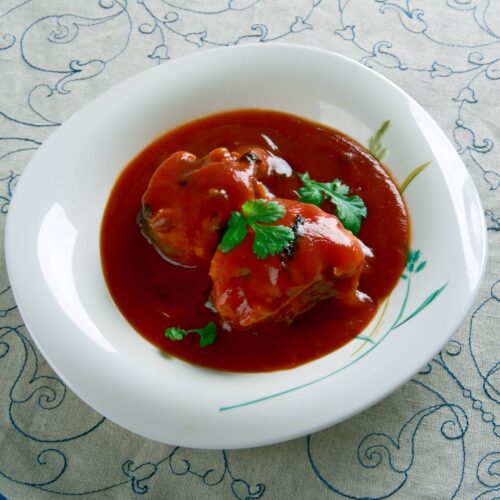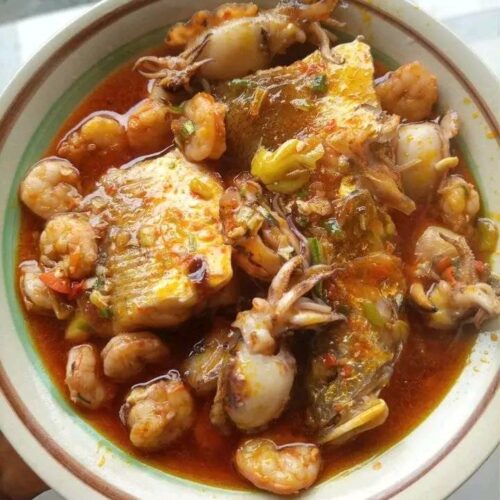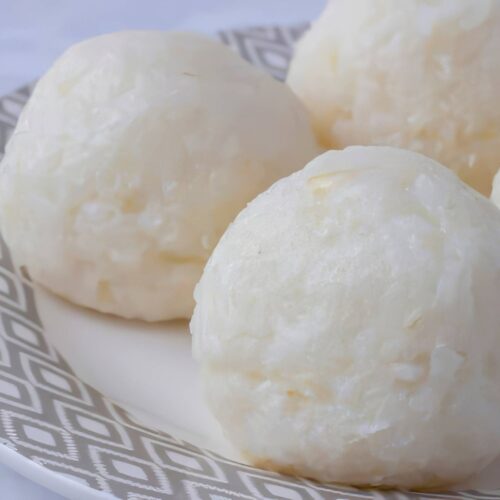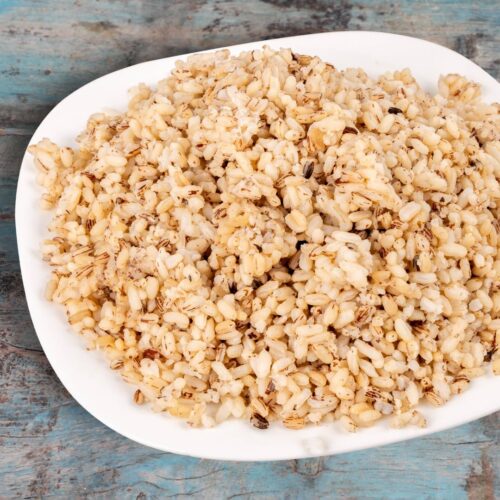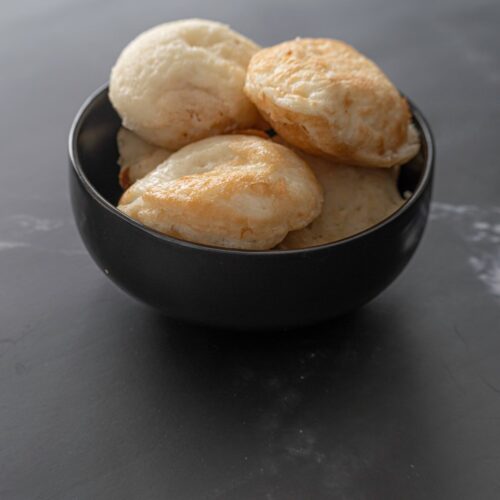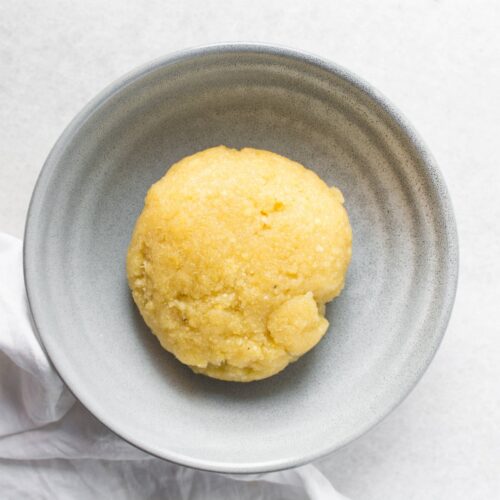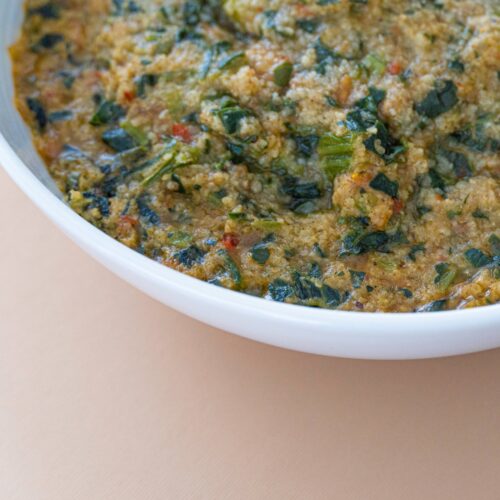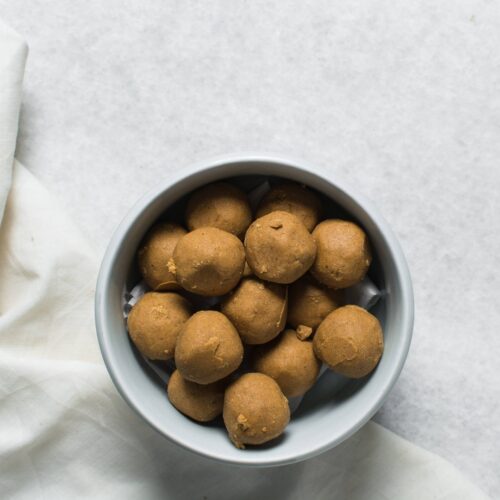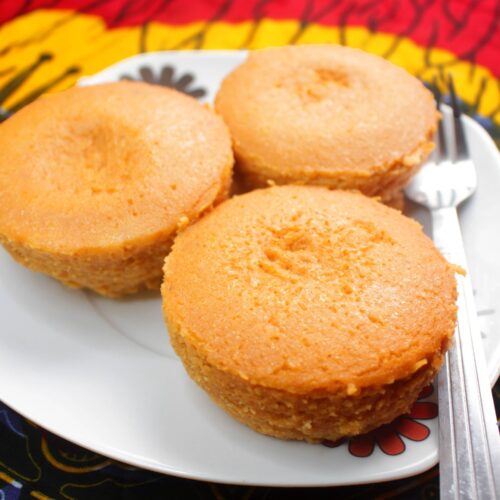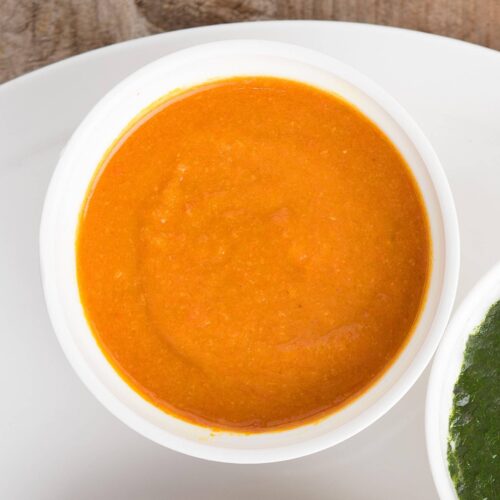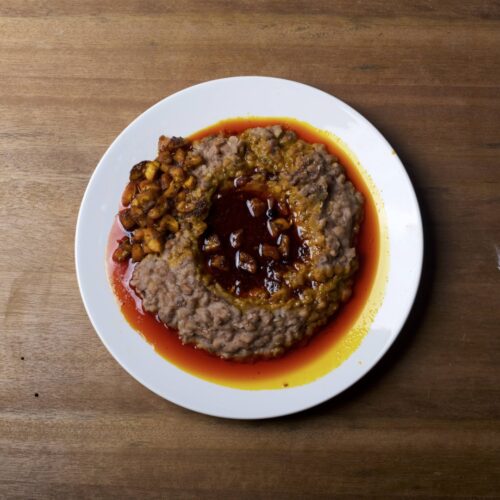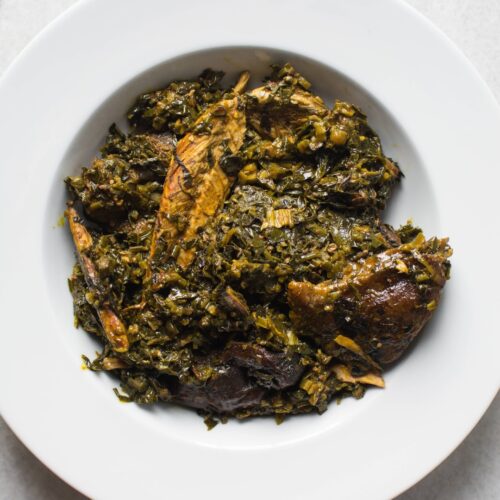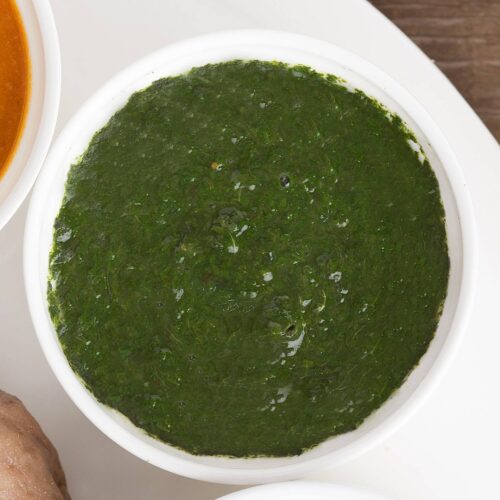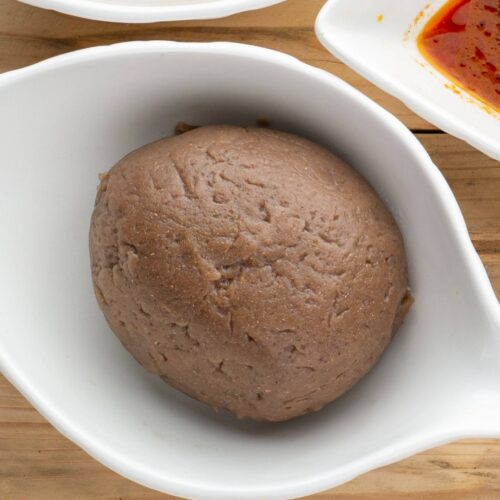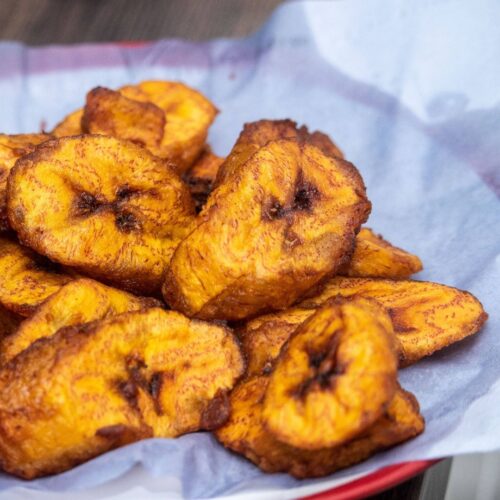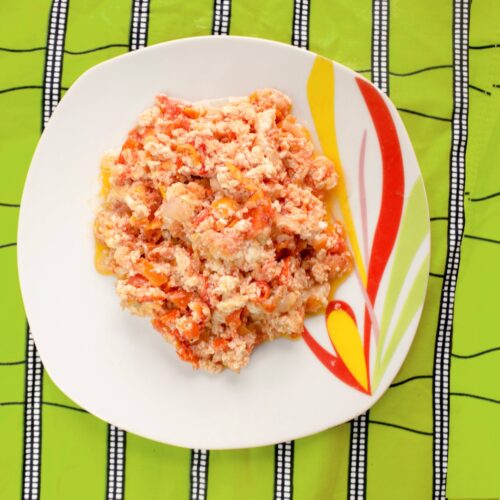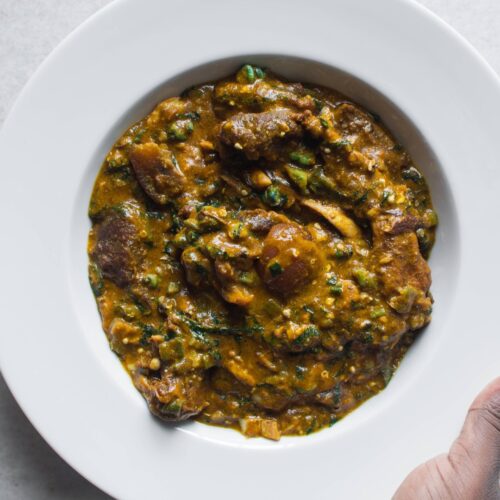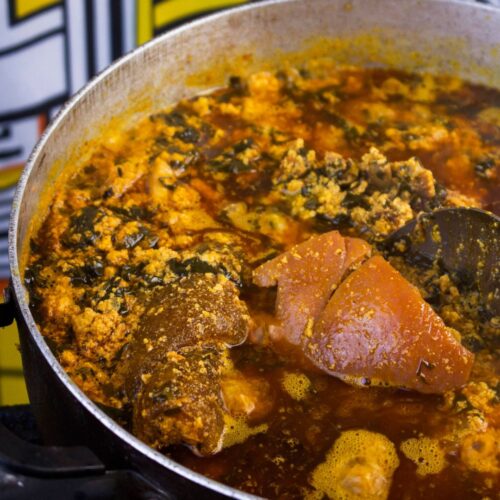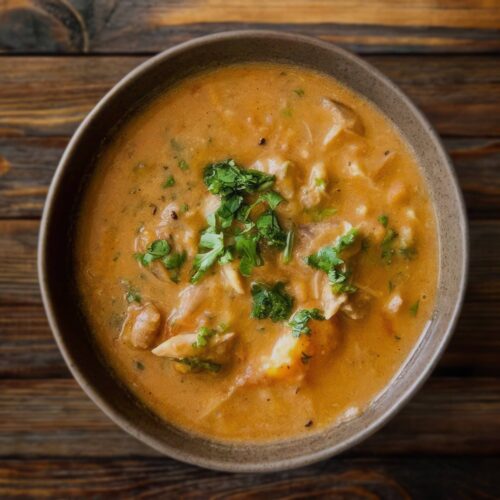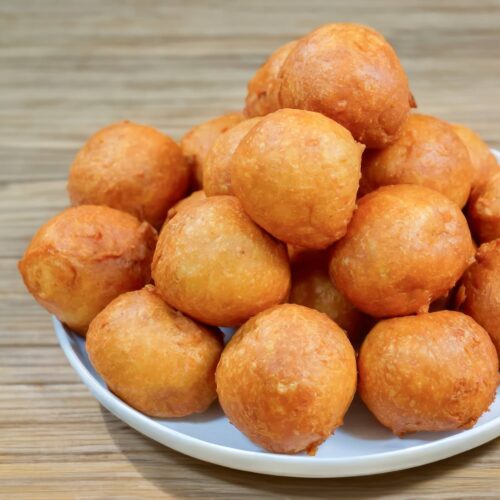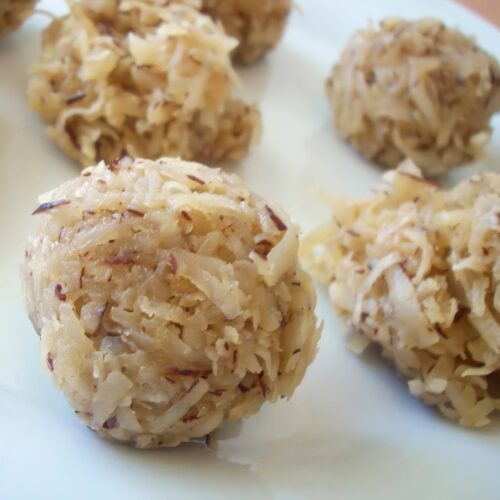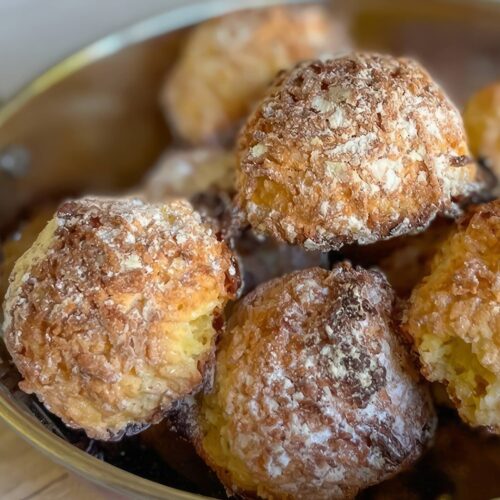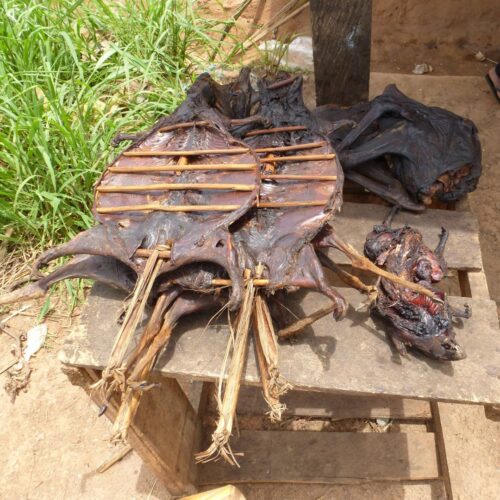THE ESSENCE OF NIGERIAN CUISINE
The essence of Nigerian cuisine lies in its diverse, bold, and rich flavors, built around the region’s staple crops: cassava, yam, taro, plantains, cowpeas, okra, maize, millet, and sorghum. There is an incredible variety of soups, stews, and sauces cooked from these ingredients or accompanied by these ingredients.
Swallow foods are a category of traditional African dishes, particularly in West and Central Africa, that have a thick, dough-like consistency and are eaten by hand. They’re called ‘swallows’ because they’re usually formed into small balls with your fingers and swallowed without much chewing. The most common everyday staples in this category are fufu, eba, and pounded yam; they serve as a carb base to scoop up meals instead of bread.
Cowpeas and peanuts are protein sources, as meat and fish are rarely affordable. Okra and leafy greens frequently appear in soups, and palm oil is essentially the foundation of southern Nigerian cooking – it’s what gives many dishes their distinctive reddish color and rich flavor.
Some soups and stews in Nigerian cuisine are designed to have a ‘drawing effect’ – a thick and somewhat slimy texture. This texture is a desirable quality, achieved with okra, ogbono (a local seed), and proper cooking. Their mucilaginous nature, when cooked, results in a thickened, slippery consistency that is characteristic of draw soups. When eating them, the thick broth is scooped up with a piece of ‘swallow’. The slimy texture clings soup to the ‘swallow’, this is where the term ‘drawing’ comes from.
GRAINS IN NIGERIAN CUISINE
Grains, along with starchy roots, are the essential carbohydrates, usually accompanied by richly flavored stews, soups, and sauces. While rice dominates as Nigeria’s most consumed grain, maize, sorghum, and wheat follow with relatively balanced consumption levels.
When it comes to rice dishes, some of the most popular are coconut rice, fried rice, plain boiled rice, and the iconic jollof rice.
This isn’t just rice; it’s Nigeria’s crown jewel of party food, the dish that can make or break a celebration. Cooked from parboiled long-grain rice in a sauce of tomato paste, fresh tomatoes, onions, Scotch bonnet peppers, curry powder, thyme, and bouillon cubes. The rice soaks up the flavors and completely transforms. Nigerian Jollof has what locals call ‘party rice’ – that charred bottom layer, that is a must for the Nigerian version.
Millet and sorghum are fundamental in the northern part, where they’re pounded, fermented, or ground into flour for porridge, dumplings, flatbreads, and beverages.
Why ferment grains? For preservation, at first, but also to improve tanginess (desired flavor in West Africa), digestibility, and an elastic texture. Ogi (also called pap, or akamu) is a smooth, porridge-like breakfast staple made from fermented corn, millet, or sorghum. Nearly every Nigerian household serves ogi regularly – for breakfast, for babies being weaned, and as comfort food for adults. You’ll see it served with milk, sugar, peanuts; paired with bean fritters akara bean pudding moi moi.
Corn (maize) appears in multiple forms – boiled as corn on the cob, roasted, ground into flour for tuwo masara (a type of swallow food made from corn flour), and processed into popular snacks.
Wheat is not indigenous but is increasingly popular, especially in urban and northern diets. Primarily used for making soft, stretchy bread, swallow foods, pasta, fried dough snacks, and other, more modern dishes.
Fonio is less common today but still significant in some northern regions. It’s cooked into porridge (tuwo acha), couscous-like dishes, or thick gruels. It’s also a gluten-free flour substitute in modern recipes, high in amino acids, low glycemic index, and is gluten-free.
VEGETABLES IN NIGERIAN CUISINE
Nigerian food is fundamentally built around starchy roots and tubers, especially in rural diets. The most widely cultivated staple is cassava, a versatile, drought-resistant, and inexpensive root. Cassava itself is bland, but fermentation creates tanginess, and it is rarely consumed without a rich side. Cassava is transformed into:
Garri – fermented, granulated cassava that’s either soaked in water or cooked into a stiff paste (eba) to eat with soups.
Fufu – fermented, wet cassava dough cooked into a smooth, stretchy swallow served with traditional soups.
Abacha is a cold, tangy salad made from boiled and shredded cassava, mixed with palm oil, spices, and local condiments.
Yam is used in similar ways – mostly as a starchy base, but typically prepared fresh (boiled, pounded, or fried) rather than fermented. Taro, also known as cocoyam, is primarily used as a soup thickener or occasionally as a snack of slightly nutty flavor and a slimy texture when cooked.
Take pounded yam, for example. It’s smooth, stretchy, and meant to be eaten with your hands – you pinch off a piece, roll it into a ball, and use it to scoop up soup. That’s worlds away from the Western approach to starches.
Beans are huge in Nigerian cuisine; they are complete meals, street food staples. Nigerian cooks handle beans differently from Western cuisine, they often remove the skins entirely, this create incredibly smooth textures. The most famous has to be akara – golden, crispy bean fritters made from black-eyed peas that have been soaked and blended into a paste with onions and peppers.
Then there’s moi moi (or moin moin), which uses that same black-eyed pea base but steams it into a smooth, pudding-like consistency. It’s packed with fish, eggs, or meat and wrapped in banana leaves. Some people refer to it as the Nigerian tamale.
Locust beans are the secret weapon flavor. These fermented seeds are like the MSG (monosodium glutamate, a flavor enhancer) of West Africa. They come from the African locust bean tree and undergo intense fermentation, which turns them into dark, pungent, almost cheese-like clusters. The smell is… let’s say it’s an acquired taste. Some people describe it as funky, others as downright offensive at first encounter. When you add fermented locust beans to egusi (melon seed), efo riro (spinach stew), or gbegiri (bean) soups, it creates this deep, umami-rich flavor. This ingredient bridges traditional and modern Nigerian cooking. You’ll find it in the most authentic village recipes, but it’s also sold in city markets and even exported to Nigerian communities abroad.
Other than starchy roots and pulses, leafy greens are important: ugu (fluted pumpkin), bitterleaf, waterleaf, and efo tete (amaranth) form the base of soups. They are used in large volumes but are later cooked down to concentrate flavor and reduce water. Onions, peppers (especially Scotch bonnet), and tomatoes are the backbone of most stews and jollof-style sauces.
MEATS IN NIGERIAN CUISINE
Meat is used sparingly to flavor soups and stews. Beef, goat, and chicken are eaten when affordable; offal (shaki, liver, kidney, intestine) are valued and not seen as lesser cuts.
Wild animals hunted for food, like grasscutter (greater cane rat), antelope, guinea fowl, monkey, or porcupine, are the bushmeats that supplement traditional meats, often smoked or dried to preserve and concentrate flavor. They’re less available due to hunting restrictions and conservation laws.
Large African land snails are a luxury protein, with high demand during festive seasons. Those snails are huge, with some reaching up to 20 centimeters in length and 9 centimeters in diameter. Snails are stewed with peppers, garlic, onions, and ground crayfish.
FISH AND SEAFOOD IN NIGERIAN CUISINE
Fish consumption in Nigeria is relatively low compared to global standards, but it also varies regionally. In the Niger Delta, Cross River, Rivers, and Lagos, fish is more common than meat. Freshwater tilapia and catfish are popular in inland areas. Saltwater croaker and mackerel are used more in coastal regions.
Dried and smoked fish are probably the most distinctive. You’ll find these rock-hard, intensely flavored fish in almost every soup and stew. They’re not meant to be eaten as chunks but more like natural bouillon cubes that dissolve into the dish.
Fresh fish definitely has its place too, especially in coastal areas. Grilled fish (often tilapia or catfish) served with pepper sauce is a restaurant favorite, and fish stew with fresh tomatoes and peppers is a classic home dish.
MILK AND DAIRY IN NIGERIAN CUISINE
Dairy consumption in Nigeria is pretty minimal. The hot, humid climate isn’t ideal for dairy farming; most communities didn’t have cattle-keeping traditions. Plus, lactose intolerance is fairly common.
Fresh milk is found mostly in the north, where cattle are kept. Milk, yogurt-like fermented milk called nono, and a soft cheese called wara or warankashi that’s similar to a mild cottage cheese. Condensed milk and evaporated milk are probably the most widespread products – in tea, coffee, and desserts, it was imported during colonial times and stuck around.
Milk powder is huge, especially for making that creamy morning ogi (fermented corn porridge) that kids love. Peak milk powder is practically a household staple.
OILS, NUTS, AND SWEETS IN NIGERIAN CUISINE
Deeply red palm fruit oil, with a distinctive nutty flavor, is a staple oil. It’s essential in preparing classic jollof rice, egusi soup, banga soup, and stews. It’s particularly important in the Southern part for frying.
Peanut oil is another staple, but in northern Nigeria. It’s milder than palm oil and is used for frying and where a neutral flavor is preferred.
Nuts and seeds are significant proteins in vegetarian dishes and natural thickeners. Peanuts are ground into pastes, roasted as snacks, and used in the preparation of suya spice blends. Melon seeds (egusi), pumpkin seeds, are used extensively and very similarly.
Nigerian dessert culture differs from Western traditions. Many sweet foods are consumed as snacks throughout the day; thus, they’re simple, practical, and straightforward, often deep-fried. Fresh oranges, pineapples, watermelons, and mangoes are commonly eaten as natural desserts.
